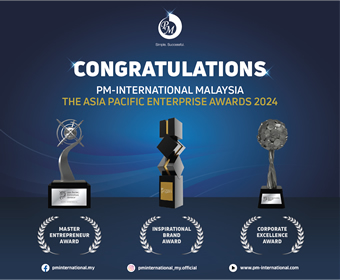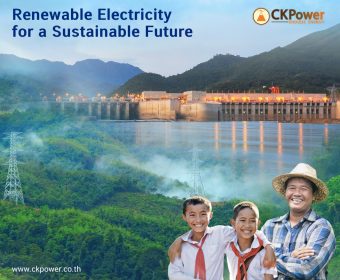As the world pushes towards reducing emissions and reaching net zero, we have all seen the increase in renewable energy projects, and Asia is no exception. Asia is a continent of great potential when it comes to renewable energy given its fast-growing economies and demand for energy. This Q&A with the Orrick team highlights some of the exciting recent events in the market from both a transactional and a disputes viewpoint and seeks to answer some of the key questions which arise, reported lexology.com.
“Tell me an interesting recent fact about renewable energy in Asia.”
Perhaps the most interesting fact about renewable energy in Asia is double-pronged and relates to capacity. From an installed perspective, as of February 2023, India has almost 175 GW of installed renewable energy capacity. Meanwhile, to highlight the prospective potential capacity, a recent report by the International Renewable Energy Agency and the Malaysian Ministry of Natural Resources, Environment and Climate Change suggested that Malaysia had the potential for almost 337 GW for solar PV alone.
While these are only two of the most recent statistics, it is apparent that there is sizeable operational capacity in the region, as well as huge potential for such capacity to increase further in the future.
“You say there is this potential for future growth, but what are the recent highlights?”
There are a variety of projects either in operation or under construction within Asia which will help with the drive towards fulfilling its decarbonisation potential. The highlights across the continent in the past few weeks are no exception.
To pick out a few key examples, the “E2” solar farm in Taiwan recently commenced operations on 24 April 2023. E2 is a 272 MW solar farm, Taiwan’s largest solar farm to date, which is capable of contributing up to 4% of Taiwan’s total solar energy output annually. On the offshore wind side, the 350MW offshore wind project at Area 1A of the Cau Mau 1 project in Vietnam completed on 10 April 2023.
Meanwhile, prospectively, an MOU between Keppel Infrastructure and ExxonMobil Asia Pacific to develop access to low-carbon hydrogen and ammonia for scalable commercial and industrial applications in Singapore was announced on 20 April 2023. Hydrogen alone is expected to meet 50% of Singapore’s power needs by 2050.
“What has been happening on the government side?”
In addition to these significant developments in terms of projects, we have also seen some notable activity from governments in the region.
First, offshore wind auctions continue apace across various jurisdictions. Taiwan’s Ministry of Economic Affairs announced the result of the first round of the Phase 3 Zonal Development offshore wind auctions in December 2022. The projects subject to this auction round could have a total of 3,000 MW of capacity once constructed, bolstering Taiwan’s position as an offshore wind powerhouse in the region.
Similarly, in late December 2022, Japan’s Ministry of Economy, Trade and Industry announced the opening second round of wind power auctions in the country. This is especially exciting given the completion of Japan’s first large offshore wind project in December 2022. Likewise, India announced in early 2023, that it will request bids for cumulative capacity of 8GW offshore wind per annum until 2030. All of this demonstrates the significant appetite of governments to promote renewables.
Second, clearly one of the best ways to promote investment in the renewables sector is through incentivising investors. The recent announcement by the Indian government of a plan to give green hydrogen producers up to 10% of their costs should help stimulate the burgeoning hydrogen market in India. This is especially noteworthy given the potential size of the market in India, so this is definitely something to watch.
Third, we have also seen hydrogen becoming part of the strategic thinking of various governments, with the governments of both Japan and Singapore publishing strategies with regard to hydrogen. Singapore launched its National Hydrogen Strategy in October 2022 (and as referenced above this seems to be bearing fruit in terms of proposed projects in the country).
Likewise, in April 2023, Japan announced its intention to revise its hydrogen strategy and set a target of an annual supply of 12 million tonnes by 2040. We expect to see further government efforts to promote investment across various renewable energy sources in the coming years, which should be of interest to investors, consumers and the climate conscious alike.
“All of these developments in Asia are very exciting. But what happens if something goes wrong in a project?”
We fully expect renewables capacity to continue to grow exponentially in Asia over the coming decade. However, we also expect the number of construction and other disputes to increase as more projects enter construction and some of the challenges associated with carrying out complex construction works in maturing renewables markets manifest themselves.
These disputes could occur in any of the development, construction or operation & maintenance phases of the project, for any number of reasons, including (but not limited to): construction defects and delays; issues in relation to parts; changes in legislation (particularly if government subsidies are removed or diluted in due course); offtake issues; technological issues; regulatory problems and contractual risk allocation. It is also possible that there could be a rise in investor-state disputes – for example where a foreign investor makes an investment in a renewable energy project in a jurisdiction, and subsequently the foreign state acts in such a way that harms the investor’s investment – this is particularly likely in relation to government regulations, guaranteed tariffs and subsidies.
All of these disputes are particularly well-suited to international arbitration (as has been the case for construction disputes to date). Renewable energy projects often involve parties and investors from different jurisdictions with a project located in another jurisdiction. Therefore, the neutrality of arbitration can be a real plus to ensure that the parties resolve their dispute in a predictable, fair and neutral environment.
Within arbitration, it is possible for the parties to select industry experts to act as arbitrators, allowing the dispute to be heard before experts who are comfortable and familiar with the issues. This is especially appealing given the complexity and high values involved in many renewable energy projects and a benefit which parties cannot access through the court systems. Equally, given that such projects often contain commercial sensitivities, the confidential aspect of arbitration makes it attractive in this context. Finally, the ease of enforcing arbitration awards around the world under the New York Convention is very enticing. This is particularly the case where the dispute involves parties from different jurisdictions.
The Singapore International Arbitration Centre (“SIAC”) is an internationally renowned arbitration institution conveniently situated in the region to deal with these types of disputes. SIAC is already one of the most popular institutional choices for handling high value, complex contractual disputes around the world, particularly those with an international element attached to them. This is exemplified by SIAC’s recently published annual report and case statistics.
The statistics are very promising given the number of new cases already seen for 2023, and also underscores how international users of SIAC are – with parties to disputes hailing from 65 different jurisdictions. Not only is SIAC well positioned to help with renewable energy disputes, it also has the benefit of having mechanisms in place to prevent parties bringing spurious claims or meritless defences (with Rule 29 of the current SIAC rules providing a party with the right to apply to the tribunal for an order dismissing such meritless arguments at an early stage). Whilst we do not necessarily anticipate such procedure being removed, we are expecting an updated version of the SIAC rules to be implemented imminently, which will reinforce SIAC’s suitability to handle disputes.
A look to the future
All in all, the future of renewable projects across Asia looks bright, with solar and offshore wind projects going from strength to strength The future of hydrogen appears similarly promising, especially in light of the government strategies, financial backing and incentives being proposed in various jurisdictions across the region. Finally, if issues do arise, parties can rest assured that SIAC is in a strong position to assist in finding a fair and efficient resolution through arbitration.
The post Upcoming Energy Trends in Asia first appeared on Energy Asia.
















